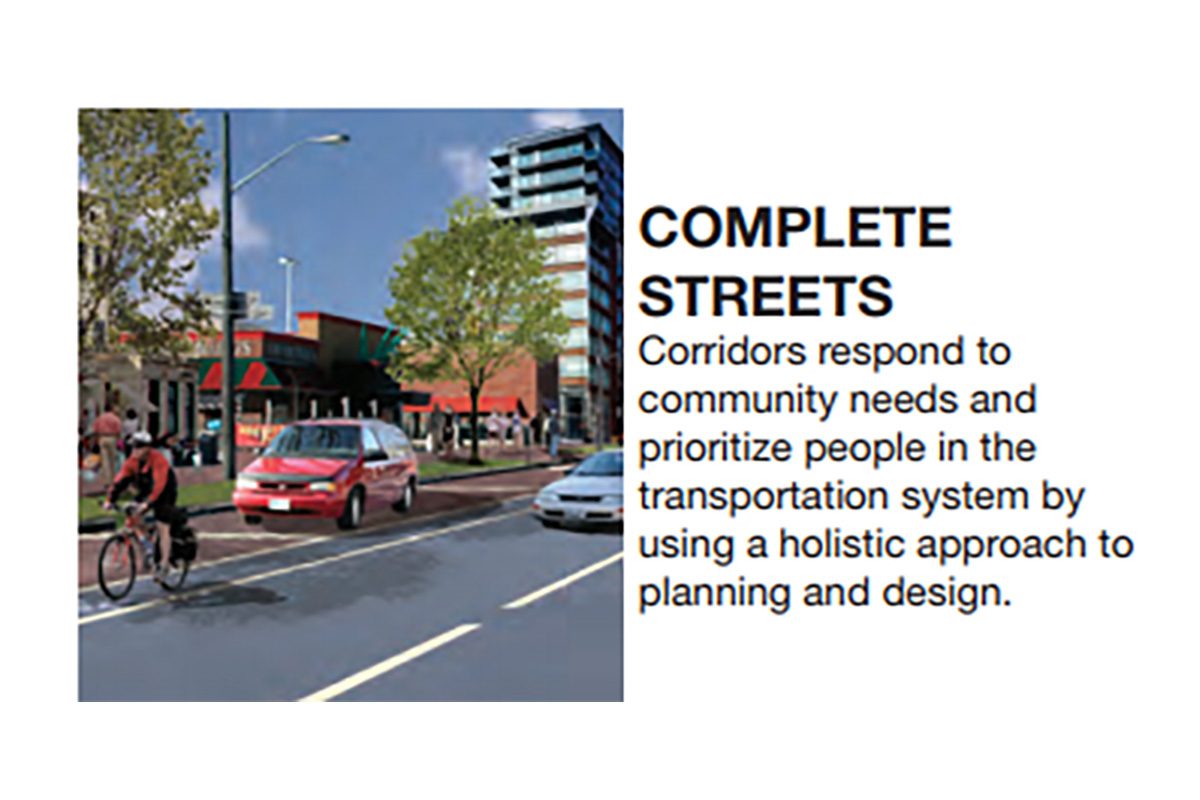
Recent updates for Western Canada and the Prairies to the Complete Streets for Canada website added 9 municipalities to the map (6 in British Columbia, 2 in Alberta, 1 in Saskatchewan), as well as updates to 7 existing cities.
All major cities in Western Canada and the Prairies now possess Complete Streets policies or approaches. Edmonton and Calgary remain the only cities in this part of Canada with dedicated Complete Streets guidelines. However, Vancouver, while not explicitly using the term “Complete Streets” in city-wide policy, is a leader in Canada for its progressive transportation policy. With the recent release of “Transportation Design Guidelines: All Ages and Abilities Cycling Routes” (March 2017), and a recent city council decision to empower city staff to implement changes without council approval to existing streets to better accommodate cyclists and pedestrians (a power city staff have possessed since 1944 in order to accommodate automobile traffic), Vancouver is well-equipped to undertake Complete Streets transformations. Vancouver also includes well-developed Complete Streets policies in several neighbourhood plans.
Many smaller cities and even rural municipalities in Western Canada and the Prairies have adopted Complete Streets approaches and policies as well. Courtenay, British Columbia’s “25 Year Vision for Multi-Modal Transportation” (2014) represents one of the most comprehensive integrations of Complete Streets into a municipal policy document. It includes a section on Complete Streets as a concept, as well as an extensive toolbox for implementation, and a street typology that includes Complete Streets templates for all street types in Courtenay. It could serve as a useful template for other small to mid-sized cities that lack the resources for dedicated Complete Streets guidelines.
Canmore, Alberta is another small community with a well-developed Complete Streets policy introduced into its Integrated Transportation Master Plan (ITP). Alongside policy documents, Canmore has a clear and accessible website explaining Complete Streets as a concept, and detailing the Complete Streets projects that have either been completed or are currently underway. The goals of each project are clearly explained, as is the rationale behind each Complete Streets transformation, and how they benefit different users of the street.
While implementation of Complete Streets varies widely across Canadian municipalities, there now exists a strong policy basis across the country. As Complete Streets policies and approaches become commonplace, it is essential that they be translated into tangible strategies for implementation that are sustainably and adequately funded.
